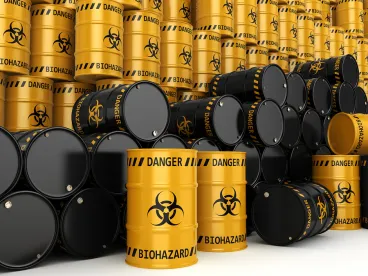With the recent release of the 2016 Chemical Data Reporting (CDR) dataset and the initial interim list of active substances released with the February 2017 copy of the Toxic Substances Control Act (TSCA) Inventory (Inventory), the magnitude of effort that will be needed for the Section 8(b)(4) Inventory Reset is becoming clear. Stakeholders should waste no time in preparing to meet their obligations.
Non-confidential Portion of the Inventory
We reviewed the substances listed as ACTIVE in the February 2017 Inventory dataset. As you know, this list was based on the substances that were reported under the 2012 CDR. Of the 67,748 substances on the non-confidential portion of the Inventory, 7,291 are listed as active (10.7%). Of the remaining non-active substances, 18,637 (30.8%) are exempt from CDR reporting (mostly polymers).
In the 2016 CDR dataset, submitters reported 7,949 non-confidential substances. Of those, 1,511 were not listed as active on the February 2017 interim active list. As in years past, some submitters reported substances that are exempt from CDR reporting. In 2016, 200 substances (again mostly polymers) that are flagged as exempt from CDR reporting were reported; 135 of those were already listed as active on the February interim active list.
In the proposed reset rule on active-inactive notification, the U.S. Environmental Protection Agency (EPA) proposed including both 2012 and 2016 CDR reporting as sources for active status for the interim active list. Combining these brings the total of active substances on the non-confidential portion of the Inventory up to 8,802 non-confidential substances. This is still a very small proportion (13%) of the 67,748 substances listed on the non-confidential portion of the Inventory as of February.
Confidential Portion of the Inventory
Of the 17,758 substances on the confidential portion of the Inventory in February 2017, only 472 (2.7%) were listed as active. This percentage is quite small, but note that 11,025 (62.1%) of all the chemicals listed on the confidential portion of the Inventory are flagged as exempt from CDR reporting.
In the 2016 CDR dataset, submitters reported that 718 confidential substances were manufactured or imported. Of those, 350 were not listed as active on the February interim active list.
The vast majority (17,286 or 97.3%) of the substances listed on the confidential portion of the Inventory are not included on the interim active list. If EPA decides to identify as active those substances that were commenced during the look-back period, this total will decrease substantially. At least 12,790 (72.0%) of the substances with confidential identities could be added to the interim active list because they were the subject of premanufacture notifications (PMN) in Fiscal Year 2006 or later and, therefore, must have been commenced during the look-back period to appear on the Inventory. This would bring the total of interim active substances up to 13,612, which would represent 76.7% of the substances on the confidential portion of the Inventory.
In any event, this analysis suggests the confidential portion of the Inventory presents a number of challenges to submitters:
-
Substantiating confidentiality claims;
-
Ensuring that confidential substances have appropriate generic names; and
-
Ensuring that confidential substances from suppliers are properly identified as active so that supply is not interrupted.
Even if EPA adds the many recent PMN substances to the interim active list, if any substances were claimed as confidential business information (CBI) prior to the updated substantiation requirements, EPA will have to require re-substantiation and descriptive generic names.
Commentary and Points to Consider
In all, of the 85,506 substances listed on the Inventory, there should be at least 9,080 substances (10.6%) listed as active when EPA publishes the updated interim active list considering both the 2012 and 2016 CDR reporting. This number would increase to 21,870 if EPA decides to identify 2006-present commenced PMNs as active and adds them to the interim active list. While the current interim active list is a good start in the Inventory reset process, and would be significantly improved if the commenced PMNs were added, the status of the remaining nearly 64% (54,556 substances) of the Inventory is unknown and there are many, perhaps tens of thousands, more substances that will need to be considered and, if needed, notified as active. Clearly, manufacturers, importers, and processors must carefully review records to determine which of the over 75,000 substances not included on the current interim active list were manufactured, imported, or processed in the ten-year look-back period and prepare Form A “active” notices.
Manufacturers and importers should pay careful attention to substances that are exempt from CDR reporting, notably polymers, naturally occurring substances, and chemicals manufactured or imported below the CDR reporting thresholds. Processors should review their records and/or work with their suppliers to ensure that active chemicals are not missed. Of particular concern are infrequently made or purchased batch chemicals that were nonetheless manufactured, imported, or processed during the look-back period. Searching records and preparing notices will be a significant challenge. Similarly, the burdens of managing confidential identities, including providing a structurally descriptive generic name and substantiating confidentiality claims, will add to that burden significantly. The endeavor promises to require an enormous effort on industry’s part and, once the reporting process is complete, on EPA’s part to review the thousands of submissions and, in so doing, populate the active list.


 />i
/>i

